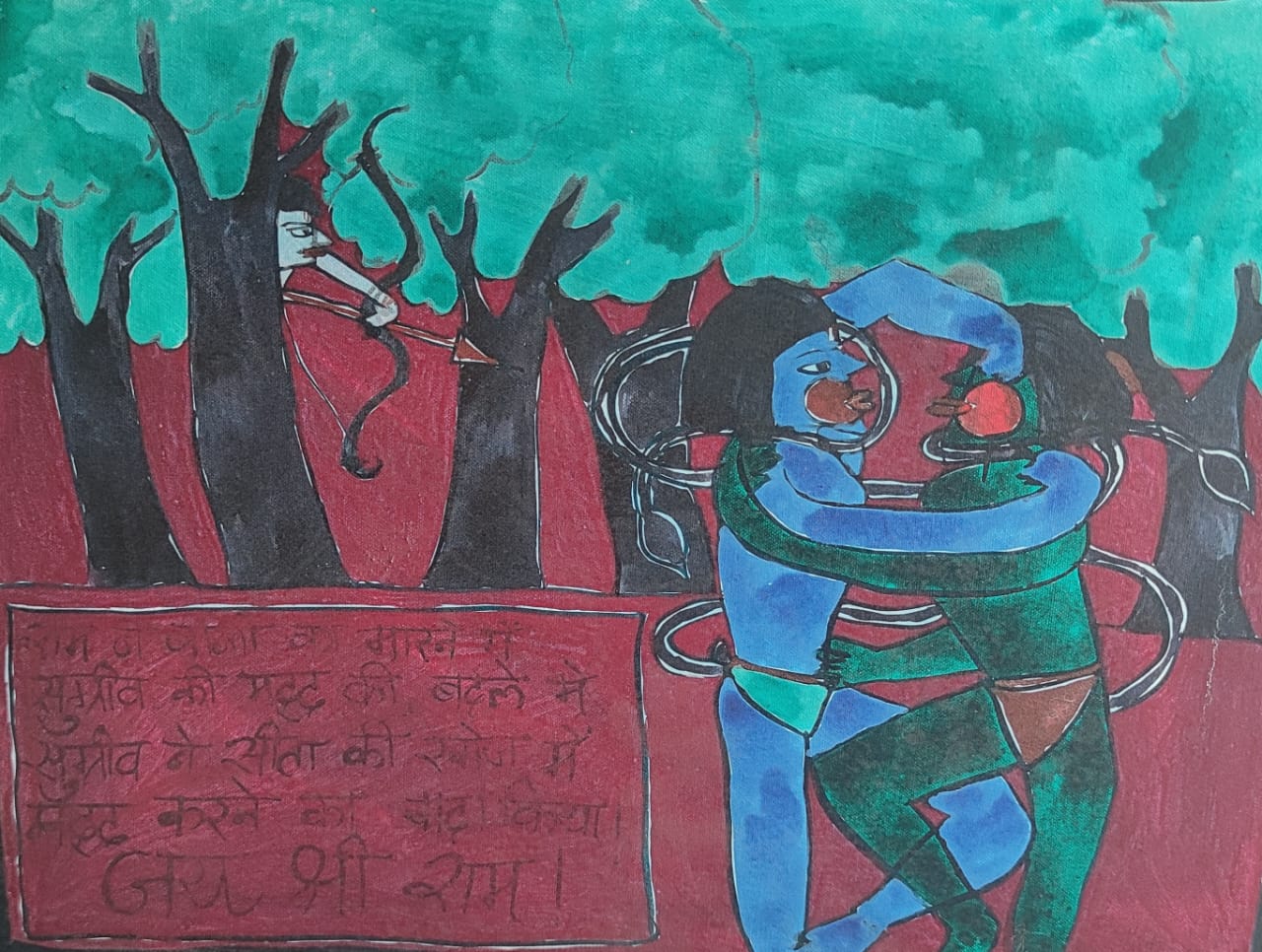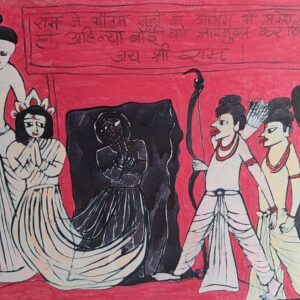“Bali Vadh” – A Painting from the Ramayana Series by Rounak Rai
Conflict, Betrayal, and Divine Justice in Stylized Form
In this powerful composition titled “Bali Vadh”, artist Rounak Rai portrays the emotionally complex and morally charged episode from the Ramayana where Lord Ram kills Bali from behind a tree during his duel with Sugriv. But rather than depicting it with epic grandeur, Rai employs his unique folk-contemporary style to emphasize the psychological intensity and symbolic undertones of the moment.
The central figures — Bali and Sugriv locked in fierce combat — dominate the foreground. Rai uses exaggerated muscular forms and contorted postures to convey the violent struggle between the two brothers. Their bodies, outlined in bold black and filled with solid, saturated color, suggest raw power and deep emotional entanglement.
Ram, the divine archer, is partially hidden behind the black tree trunks in the background, aiming his arrow — a depiction that raises questions of morality and dharma. The trees themselves, painted in surreal black with red ground and green canopy, create a haunting, theatrical space — more psychological than literal. They frame the act not just as a forest encounter, but as a moment of fateful decision cloaked in shadow and secrecy.
The red panel with Hindi text grounds the narrative and gives it the feel of a traditional story scroll, while still maintaining its contemporary rawness. The color red here also works symbolically — signifying both bloodshed and divine judgment.
Rounak Rai’s hallmark style — flat perspective, expressionistic faces, angular limbs, and handwritten storytelling — transforms this iconic scene into something more than a myth. It becomes a meditation on justice, loyalty, betrayal, and divine intervention.
In “Bali Vadh”, Rai doesn’t glorify violence — he invites reflection. He turns an ancient tale into a living question, using visual metaphors that feel both rooted and radically modern. The painting stands as a bold example of how Rai reclaims mythology not just to illustrate it, but to emotionally interrogate it.




Reviews
There are no reviews yet.